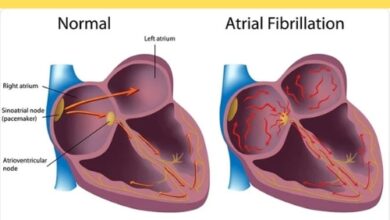New Treatments offer much-needed hope for Patients Suffering from Chronic Pain

What is the cause of chronic pain, at the most basic level?
Pain is generally the result of intricate interactions between nerves, brain processing, and tissue damage or inflammation.
There are numerous biological mechanisms that might give rise to pain. Nociceptive pain is the type that most people experience when they are in acute pain. This type of pain is brought on by damage to tissue or impending harm, which sets off the activation of nearby nerves. These nerves, which resemble electrical wires, carry information from the damaged tissue to the spinal cord and, eventually, the brain, where pain is finally felt.
However, because those electrical signals are increased or decreased at several times throughout their passage to the brain, stimulation of those nerves alone does not equate to pain. The brain’s ability to perceive pain is essential as it doesn’t happen while a person is unconscious.
As in the case of arthritis, nociceptive pain can also be brought on by persistent tissue damage or inflammation. Because of these injuries, the brain receives persistent reports from the peripheral nerves, which causes the sense of pain to persist.
There are additional medical conditions where the nerves themselves sustain damage, including diabetic peripheral neuropathy. In these situations, damage to the nerves themselves—rather than the tissues they report from—is reflected in the pain signals the nerves send to the brain. We refer to this as neuropathic pain.
The original tissue damage may completely heal in other types of chronic pain known as nociplastic pain, but the brain and nervous system still produce pain signals.
All three of these phenomena—nociceptive, neuropathic, and nociplastic pain—are actually involved in many chronic pain syndromes, which makes diagnosis and therapy more challenging.
How do doctors like you measure pain?
I believe that everyone who has visited a hospital in the last ten years, at least in the US, is familiar with the numerical scale used to rate their level of pain. That is a one-dimensional evaluation of pain that just inquires about the intensity of the discomfort.
However, pain is a multifaceted phenomenon that involves factors beyond its intensity. Hence, a single number representing the degree of pain truly does not capture the influence that a patient’s discomfort may be having on activities, relationships, sleep quality, pleasure, and general life satisfaction.
The hardest thing about pain in general, and many types of chronic pain in particular, in my opinion, is that it is invisible. There’s no reliable, outside method to truly gauge someone’s level of discomfort. Although there are more advanced techniques for quantifying pain that aim to address some of those more intricate elements, the science is still far from perfect. Based only on what the patient tells you about their experience, everything is still subjective.
What are some of the most promising new pain treatment options?
Pain reprocessing therapy is one recently well-liked treatment that uses a behavioral method to get rid of pain.
At our medical campus, therapists assist patients in comprehending the factors that contribute to chronic pain and then reassessing the sensations they consider painful, such as while doing activities that they usually find difficult. In order for the brain to “unlearn” pain, patients undergoing pain reprocessing therapy should be able to perceive the pain signals as less dangerous.
Another method being used in novel ways is called nerve ablation, which involves drugging the surrounding nerves to numbness before purposefully damaging them to cause pain. In some situations, medical professionals inject a substance around the nerves or apply mild heat to them, impairing their ability to transmit pain signals for several months or even years. Although this method has been used for many years to treat pain in the spine, it is currently being utilized increasingly frequently to treat pain in other body parts.
A comparable strategy involves stimulating the nerves that supply a painful region with electricity to change or obstruct the way pain signals pass through them. This technique delivers the low level of electricity by positioning a tiny electrical device next to the nerve. This is an illustration of neuromodulation, which is being utilized more and more to treat a wide range of chronic pain disorders in the body, from migraines to foot pain. It has even demonstrated potential in the treatment of acute pain following knee replacement surgery.
Spinal cord stimulation, which is used to treat a number of disorders that cause chronic pain, is a well-known form of neuromodulation. Wires are inserted by a surgeon beneath the back’s bones, outside of the spinal fluid and spinal cord. The cables are connected to a battery that functions similarly to a pacemaker battery and sends electrical signals to the spinal cord’s nerves to jumble pain signals.
What role has the opioid crisis played?
If not for the opioid crisis, the development of these novel therapy alternatives for patients with chronic pain might not have accelerated as much.
Opioids were prescribed far too frequently for chronic pain for many years. Opioids do, however, really help certain chronic pain sufferers in terms of pain management and quality of life. I believe that physicians have overcorrected to the degree where it may now be challenging for these patients to receive the opioid treatments that have been so successful for them. Many patients no longer have access to opioids at all in various parts of the United States, partly because of a slowdown in the manufacturing of these drugs over the previous few years.
Because of this, scientists are currently searching for novel medications—including cannabinoids—that reduce pain without carrying the same dangers of addiction and overdose as opioids. In recent years, behavioral and procedural therapies, such as neuromodulation, have become more prevalent in patient care, replacing the previous emphasis on medicine.
Looking ahead: What’s next?
Determining which patients with the same disease will respond to the same medication is, in my opinion, the holy grail of pain management. For instance, two people with osteoarthritis of the knee, a degenerative tissue disease, may have almost identical X-rays, but they may experience pain very differently and react differently to treatment. While some patients respond well to physical therapy, others may not get better with it alone and may need several prescription drugs, injections, and eventually surgery in order to feel better. In the meantime, the patient may continue to experience pain.
It is still unknown to researchers like me what traits distinguish one patient from another in terms of those results. This implies that a lot of trial and error goes into current treatment methods, which may be slow and irritating for individuals who are in pain.
In order to match each patient to the appropriate treatment regimen the first time, my main aim and goal for the future of pain management is that researchers will be able to better anticipate who will respond to a certain medication.




